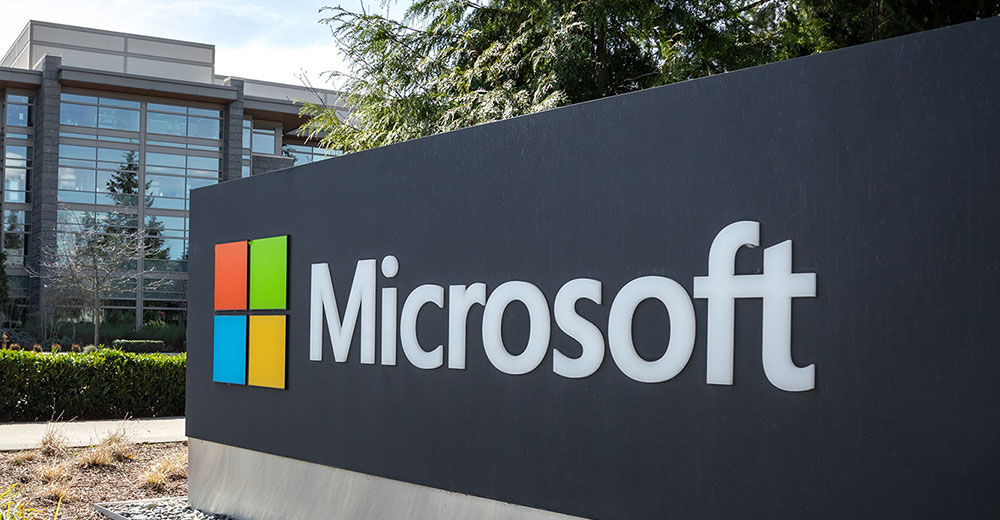At Microsoft Build last week, Satya Nadella, Microsoft’s CEO, opened with the benefits of collaboration and cooperation, how developers are now growing faster at non-tech companies than inside tech companies, how companies will need to advance, and how every person will need to begin preparing for a very different future.
Pretty much the entire event was about massive improvements to developer tools so that more people could become developers, and these newly-enabled devs could more aggressively build their part of this fantastic future.
Microsoft isn’t just building for the future. The company is focusing on tools that will allow an ever-broader group of people to program for themselves. Microsoft anticipates a new PC revolution — but instead of focusing on operational tools like word processors, spreadsheets, email, and databases, they aim to enable a new class of citizen developers that won’t only be adjusting to that future — but crafting it in real time.
At the heart of this plan for the future is Microsoft’s pivot to open source; and while there were several benefits highlighted for that action, an important one was left out which is that Microsoft has become a far better place to work.
Let’s talk about some of the interesting things that came out of Microsoft Build last week, and we’ll close with my product of the week, a 3D printed fake rhino horn with the same genetic fingerprint as a real one. You’ll want to check this out because it is brilliant.
The Hidden Benefit of Open Source
As I was watching Microsoft Build and listening to powerful speakers like Satya Nadella, Sarah Novotny, and Scott Haselman (who did the most amazing scripted demo I’ve ever seen), it hit me that I saw something I’d seen before.
When IBM changed from being proprietary to be open, the culture in IBM improved. I didn’t connect the two elements to confirm causality; it just seemed like an interesting coincidence. But I observed the same impact at Microsoft.
Microsoft used to have one of the most hostile cultures of any company with which I’ve worked. Friends would tell me stories, particularly when they were new to the company, of a nasty practice at Microsoft. I can’t repeat the term to a mixed audience, but it was folks who would say nice things to your face in a meeting then, as soon as your back was turned, find ways to undermine your position aggressively. This practice wasn’t presented as an accessional thing, but something that was very common.
It was as if both companies’ proprietary and predatory practices earlier created predatory practices inside the company and between employees — and the people that exhibited this behavior not only weren’t chastised for it, but they also advanced over the nicer people that were on the receiving end of it.
Now IBM was never as bad as Microsoft was, but I’d swear when I worked there that for every person they had trying to get needed change done, there was a crapload of people doing everything they could to block progress. I had a second-line manager explain that the way to advance in IBM was to dodge commitments and not do anything because doing things attracted criticism. Making commitments was foolish in an environment designed to block progress.
But when both companies moved to a more cooperative and collaborative business structure, adapting and championing open source, people became more cooperative and collaborative. The positive change in internal behavior resulted in a very positive change to internal culture.
Intuitive in Hindsight
As I think about this, a positive culture connected to positive external behavior should be the obvious benefit of stopping the belief that the only way to win is if the other guy loses.
It strikes me that every firm that has embraced open source as a core business element has also enjoyed a culture change because rewards then go to those who cooperate and collaborate better instead of those that figure out new and creative ways to take advantage of customers or partners.
Suppose we look at Apple, in contrast.
In that case, they still use the old proprietary model. They face many antitrust lawsuits and, I believe, have the most significant number of “Something Gate” scandals of any company in recent memory.
Just today, I read an article on how they massively cut costs in their new iMac line in an apparent attempt to spike margins by not commensurately lowering prices. Cutting costs significantly while holding or increasing prices is a form of price gouging. This practice has to create a situation where the Apple employees who are knowledgeable about this aren’t feeling good about using or selling Apple products.
More than any other U.S. company, Apple is infamous for abusive labor practices, but generally, this is with manufacturing partners. Apple’s supply chain is allegedly an abusive mess. But given that Apple appears to tolerate that abuse with partners, it is likely they tolerate it in the office. As insular and private as Apple is, getting people to admit they are being abused is hard, but it does happen.
Granted, Steve Jobs was infamous for abusive behavior, but he also set the current culture that remains proprietary and hostile to customers, partners, and employees. Yes, it has resulted in one of the most valuable companies globally, but Microsoft is just one step behind them, and now Microsoft is a far better place to work and a far better partner.
Wrapping Up: Open Source = Greater Place to Work
I’m a big advocate of companies that are great places to work. The first tech company I worked for, ROLM Systems, had a “Great Place to Work” department which attracted me to the company. Ironically, IBM bought ROLM Systems and killed the effort, but they adopted open source and a far more positive attitude, making it a far better workplace.
It shouldn’t be a surprise that if you prioritize treating those outside the company well, and with respect, and focus on cooperation and collaboration over hostile behavior, that will result in the same thing inside the firm.
I believe there is enough evidence to suggest that adopting and fully embracing open source and a more collaborative and cooperative attitude also results in a much better workplace.
We all have a choice of where we work and how we treat others. I think what I saw at Build suggests that not only is the open-source approach better now financially, but it is also better interpersonally — and the more this concept spreads, the better tech companies will be as employers.

3D Printed Rhino Horn
Now, this isn’t something to buy your Dad for Father’s Day (yet), but I think this artificial rhino horn is a brilliant example of people using technology to make the world a better place.
You see, some cultures have largely unfounded beliefs that parts of animals have magical qualities. For instance, they’ll catch sharks, rip off their dorsal fins for soup and then toss the sharks back in the water to die. Rhino horns have long been sought as fake remedies; and the idea here, much like the idea behind artificial meat, is to create something with the same properties but without the need to kill the endangered rhino.
Now, an issue is that since the natural horn doesn’t do anything, the fake one won’t either, suggesting they may want to add something to the mix to create a natural, measurable benefit; otherwise, users are likely to conclude the fake rhino horn isn’t good enough.
When the Covid-19 virus broke out, most of us learned about Chinese wet markets which have to be one of the most horrible and (warning: the picture of the butchered dogs is very disturbing and hard to forget) abusive places for animals globally.
If we can replace this animal cruelty at scale with lab-grown alternatives that are cheaper and better, or just not from dead pets, I think that would be one of the most beautiful things as a race we could accomplish. Granted, we are fixing something I don’t think we should be doing first, but progress is progress.
I can think of few better ways to use technology than to protect creatures being abused and killed. As a result, the experimental artificial rhino horn — as one example of how to help put an end to animal cruelty — is my product of the week. We need more people and companies doing this.



























































